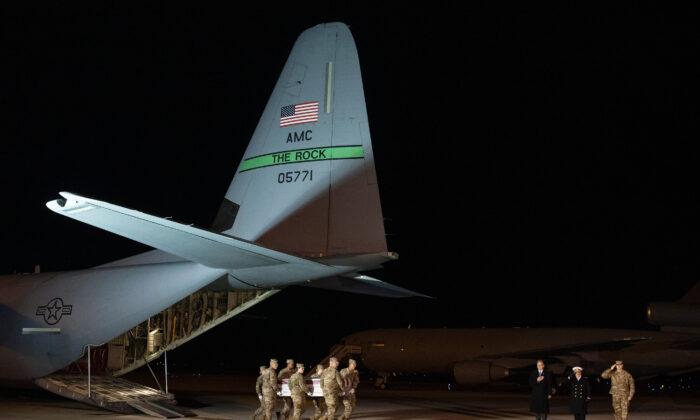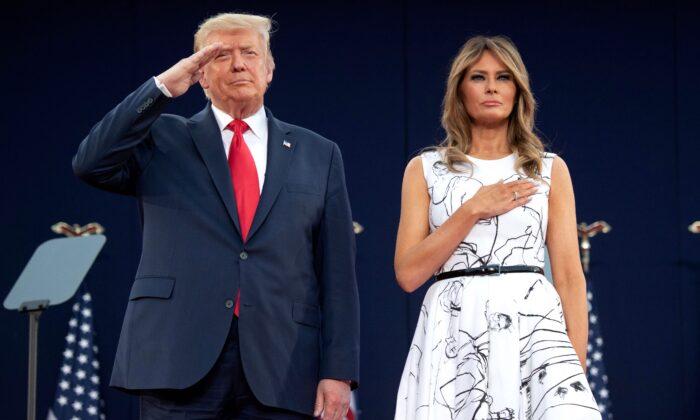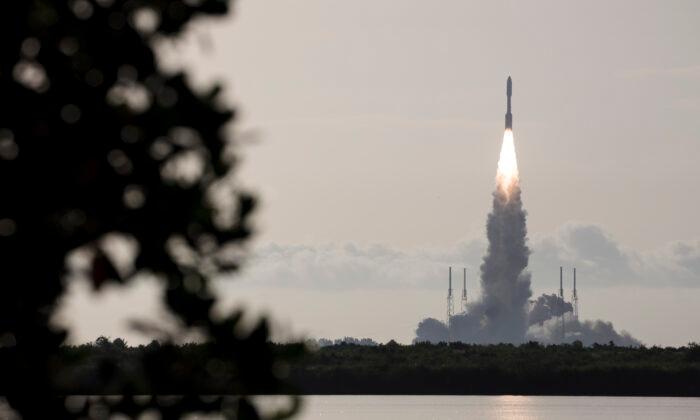Two days of terror at U.S. military bases—Pearl Harbor Naval Shipyard and Naval Air Station Pensacola—demonstrate the horrific result of laws and regulations that disarmed our military personnel when on base.
You read that right, America’s troops can’t defend themselves.
On Dec. 4, a U.S. Navy sailor killed two people and injured another at Pearl Harbor before killing himself.
On Dec. 6, an aviation student from Saudi Arabia killed three people and injured eight in Pensacola. He was killed only after local sheriffs arrived.
There have been too many killings at military bases, but unlike the Japanese attack at Pearl Harbor on Dec. 7, 1941, these weren’t a surprise.
Why? Because Clinton- and Bush-era laws and regulations disarmed military personnel while on base. America’s troops, highly trained in marksmanship and defending people around the world, aren’t allowed to protect themselves or others, and therefore, they’ve become sitting ducks for terrorists and killers.
Sure, there’s military police and some others authorized to be armed on any military base, but like with school shootings, what matters is having enough armed “good guys” on base so there’s probably one close enough to act if a terrorist or murderer opens fire.
The clear and obvious solution to mass killings on our military bases is to allow our military personnel to carry firearms while on base, either military or privately owned arms. Just having many armed troops on base will deter killers and terrorists from even considering a mass murder.
I urge members of Congress to reintroduce H.R. 3199 or similar legislation to repeal all such laws and regulations—I’ve done the research for you. Let’s get this on the president’s desk before Christmas.
I urge President Donald Trump to take immediate executive action to repeal Army Regulation 190–14, issued on March 12, 1993, and Department of Defense Directive Number 5210.56, issued on Nov. 1, 2001, as modified on Jan. 24, 2002.
Either or both actions will enhance the safety and lives of our military personnel. Based on the previous killings and terrorist attacks, there may be more, unless these laws and regulations are repealed.
Excerpts from the ‘Safe Military Bases Act’:
A BILLTo safeguard military and civilian personnel on military bases by repealing bans on military personnel carrying firearms, and for other purposes.
Be it enacted by the Senate and House of Representatives of the United States of America in Congress assembled,
SECTION 1. Short title.
This Act may be cited as the “Safe Military Bases Act.”
SEC. 2. Repeal of laws and regulations disarming firearms-trained military personnel and prohibition on reimposing bans on military personnel carrying firearms.
(b) Findings.—Congress makes the following findings:
(1) In both the Fort Hood and Navy Yard shootings, military personnel unable to carry firearms by the military gun bans were unable to stop the shooters.
(2) Military personnel are trained in firearms use and are prepared to protect and defend the United States at all times.
(3) Military personnel are entrusted with firearms and other weapons in the defense of the United States.
(4) Gun free zones attract mass-murderers. The Aurora, Colorado, shooter selected the single theater in the area that banned concealed-carry.
(5) Following the Fort Hood terrorist attack, the world—including the Navy Yard shooter—learned that post-gun-ban military bases are inadequately defended targets. Such shootings may happen again as long as military personnel are disarmed.
(c) Repeal of laws and regulations disarming firearms-trained military personnel.—
(1) REPEAL.—Effective on the date of the enactment of this Act—
(A) Army Regulation 190–14, issued on March 12, 1993, is repealed; and
(B) Department of Defense Directive Number 5210.56, issued on November 1, 2001, as modified on January 24, 2002, and by any subsequent modification, is repealed.





